Few products have changed as rapidly or as significantly in our lifetimes as the common automobile. Just 20 years ago, passenger vehicles—the kind that were driven by people and ran on gasoline or petrol—shipped with just 1 million lines of code onboard. Today, the navigation system alone requires 20 million lines of code and the fully-autonomous electric vehicles of the near future are expected to require one billion lines of code to operate safely.
Product complexity has exploded in the automotive industry as vehicles are packed with every sensor, consumer electronic and infotainment option possible—not to mention the growing number of driver assistance systems needed to offset all the distractions created by the other technology in the cockpit and cabin!
So how can a large automotive OEM like Ford Motor Company ensure its supply chain of approximately 100 global suppliers is able to consistently produce the massive variety of components, subsystems and materials needed to manufacture a modern automobile… and deliver them with the quality, speed, price and requirements Ford and its customers expect?
The answer is the ASPICE standard.
What is ASPICE?
Automotive SPICE®—the Automotive Software Process Improvement and Capability determination, commonly referred to as ASPICE— defines processes and best practices for software and software-based system development for the automotive industry.
ASPICE differs significantly from typical regulations and compliance requirements because it evaluates more than just the products you manufacture—ASPICE evaluates your company as a whole. This includes the support you can provide for your products, as well as how efficient and consistent your internal processes are.
Also, unlike most industry regulations, ASPICE isn’t a pass/fail assessment. ASPICE defines six certification levels, from 0 to 5:
- Level 0 – Incomplete: Development processes and the products themselves are incomplete and/or have not been documented.
- Level 1 – Performed: Safety-critical development processes are complete and have been documented.
- Level 2 – Managed: Development processes are established, documented and followed across the organization. The supplier is prepared to implement and support its products.
- Level 3 – Established: Development processes are well established, documented and have been followed across the supplier for some time since Level 2 certification was reached.
- Level 4 – Predictable: To reach this level, a supplier must have been executing its processes consistently enough and long enough that performance can be predicted.
- Level 5 – Innovating: – Supplier processes are not only consistent enough to be predicable, but the supplier is mature enough to be able to optimize the processes too.

In order to obtain ASPICE certification, your organization must be audited by external, certified ASPICE assessors. As you can probably guess, obtaining an ASPICE certification is a comprehensive, companywide initiative, particularly for organizations seeking Level 2 certification or above that involve in-depth interviews and process audits.
Preparing for a successful ASPICE assessment is a significant undertaking, requiring strong leadership, change management, documentation, preparation and execution—in addition to your ongoing product development activities. But the investments can be well worth it for several reasons:
- For OEMs and many of the Tier 1 suppliers that work directly with the OEMs, ASPICE compliance is a prerequisite for doing business with them. No certification, no RFP.
- As products get more complex and development and life cycles shrink, OEMs continue to raise the bar, requiring higher levels of ASPICE certification—each of which requires additional resources, commitment and preparation.
- ASPICE compliance also certifies compliance with two other important automotive standards: ISO-26262: Road Vehicles – Functional Safety in Automotive and ISO-21434: Road Vehicles – Cybersecurity Engineering.
- Implementation of ASPICE delivers process and business benefits for your entire organization, including:
- improved productivity
- better product quality
- lower cost of defects
- The ASPICE assessment process itself offers significant value, identifying strengths and weaknesses in your organization and process areas that require improvement, providing a clearer path to certification.
How to accelerate your ASPICE certification
Achieving your targeted level of ASPICE compliance may seem daunting, but you have a secret weapon: the application lifecycle management (ALM) platform that supports your software development processes.
Some ALM toolsets like IBM’s Enterprise Lifecycle Management (ELM) version 7.0 offer specific support to achieve and accelerate ASPICE compliance, including:
- Templates: repeatable, compliant patterns that simplify the ASPICE compliance process
- Asset libraries: ELM comes pre-populated with ASPICE-compliant sample data, offering real-world examples to reference.
- Project dashboards: ELM’s built-in data visualizations include ASPICE-specific modules with essential KPIs and metrics, ready to be customized for your specific needs.
- Agile process guidance: including process definitions, guidelines and descriptions for systems engineering that support both Agile and ASPICE.
- Detailed reports: dedicated reporting to deliver insight into ASPICE compliance status for assessments.
IBM ELM accelerates the adoption and implementation of industry-specific regulations and standards by making it a natural by-product of work outcomes, rather than a dedicated task.
ELM also has the ability to automate the creation and maintenance of relationships throughout the development lifecycle, including relationships between requirements, work items, architecture, design, and test plans.
Why is that important? When compliance audits take place, ELM users can deliver specific reports detailing every aspect of the software’s development, including what users were involved, what exactly was changed, and when.
These results are delivered instantly, with 100% completion and accuracy, since each action had been logged by ELM automatically across all phases of development.
Grow your market share and your bottom line
Achieving ASPICE compliance can seem overwhelming, but for industrial organizations supporting the automotive industry, it has become the standard for any supplier who hopes to do business with leading Tier 1 suppliers or the OEMs themselves. And the standard is getting higher all the time.
Working to achieve ASPICE certification also has the ability to accelerate the maturity of your organization’s processes, delivering breakthrough improvements in innovation, quality, time to market and profitability.
Visit us to find out how one of the world’s leading industrial integrators can help your organization build ASPICE compliance into every aspect of your development processes, automatically.
ABOUT THE AUTHOR
Bertrand Raillard
Offering Manager, Persistent Integration Platform
Persistent Systems, Ltd.
Bertrand Raillard is responsible for leading the Integration products and services offerings at Persistent Systems, enabling customers to create truly end-to-end digital solutions using their preferred engineering platform.
To accomplish this, Bertrand relies on 25 years of experience in the software industry, with the last two decades focused on supporting a variety of industries and manufacturers of everything from blast furnaces and grain silos to jet fighters and chewing gum.
Bertrand holds a bachelor’s degree from ISTEC, the Institute of Higher Education in Marketing and Commerce in Paris, France.






